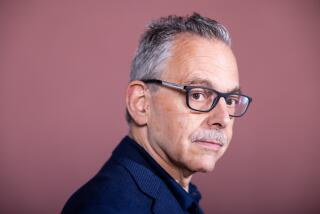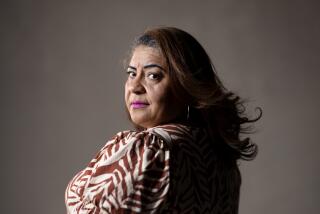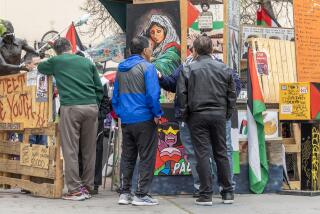Recalling giant in Chicano history
Sal Castro was praised as a tireless, inspiring leader and activist by university professors, doctors and a former California Supreme Court justice at his funeral Thursday at the Cathedral of Our Lady of the Angels.
But he simply wanted to be remembered as a teacher.
More than 1,000 of Castro’s family, friends and admirers gathered to celebrate his life, which included the student walkouts at five predominantly Mexican American schools, mostly on the Eastside. The weeklong walkouts to protest inequalities in education for Latinos in the Los Angeles Unified School District came to be seen as a milestone in community activism. Castro, a teacher at Lincoln High in 1968, helped organize those protests.
“Very few of us have the opportunity to make history that affects other’s lives,” said Mario T. Garcia, who collaborated with Castro on “Blowout!” a book about the event. “He’s a giant in Chicano history and should be recognized as a giant in American history.”
Castro died in his sleep after a seven-month bout with cancer April 15 at the age of 79. He leaves a wife, two sons and two grandsons.
His widow, Charlotte Lerchenmuller, reminisced about the couple’s 45 years together and how excited she was to be his “date” as a chaperon at the Lincoln High School prom in 1968. “But he stood me up,” she said.
He was arrested that day and charged with 30 counts of disturbing the peace and conspiracy to disturb the peace after the walkouts, which involved students from Lincoln, Garfield, Belmont, Wilson and Roosevelt high schools.
Mayor Antonio Villaraigosa, filmmaker Moctesuma Esparza and Chicano artist Harry Gamboa Jr. were a few of those students.
“We had rights to be educated. He spoke on behalf of our people and maintained our integrity,” Gamboa said. Now, as an artist and teacher, Gamboa said, he hopes to “carry forth some of Sal’s influence.”
Still, for years after the walkouts, some said many things had not changed at the schools.
When Castro’s student Robin Avelar-LaSalle was assigned the subject for a project nearly a decade later, she thought the “walkout” was a dance and didn’t know that her instructor was a key figure.
She and others were inspired by his story and planned to have another walkout in 1978, but they were met by school administrators and police officers and retreated to class.
Castro was still proud.
“He told us, you don’t have to fight from the fringe, you can fight from the inside,” said Avelar-LaSalle, a 1978 Lincoln High graduate who received her doctorate in education from Stanford.
Castro’s influence was so deep and profound that many of his students became teachers, and one -- Carlos Moreno -- went on to become a state Supreme Court justice.
“He made education relevant for us and made school worth going to,” said Richard Verches, an international human rights lawyer and lecturer at UCLA. “We continue to give back to the community because of him.”
Hearing these stories was a source of immense pride for Castro, Lerchenmuller said.
“He was proudest when former students would tell him, ‘Castro, I did what you told us to do. I went to college and became a teacher.’ ”
Some at the funeral wore shirts or jackets representing the Chicano Youth Leadership Conference, a nonprofit organization Castro founded in 1963 that trained future leaders at annual workshops held until it lost its funding in 2009.
Collections from a donation box for the recently formed Sal Castro Foundation will be used toward reinstating the workshops.
“Sal was a teacher, but he taught more than United States history and government,” Lerchenmuller said. “He taught pride, fairness, dignity and motivation.”
“It is all our collective responsibilities to keep his legacy alive and moving forward.”
--
More to Read
Sign up for Essential California
The most important California stories and recommendations in your inbox every morning.
You may occasionally receive promotional content from the Los Angeles Times.










